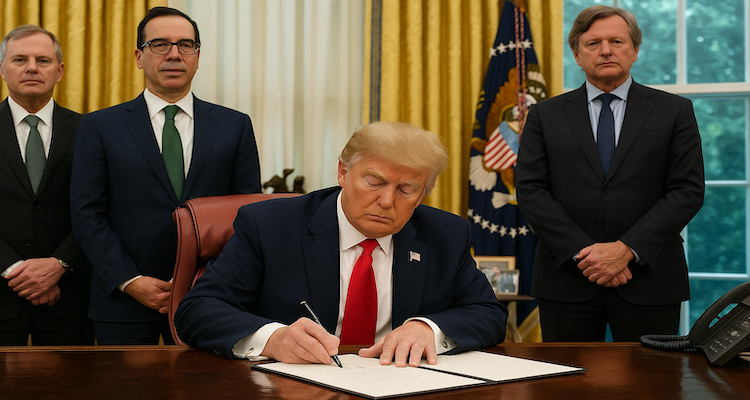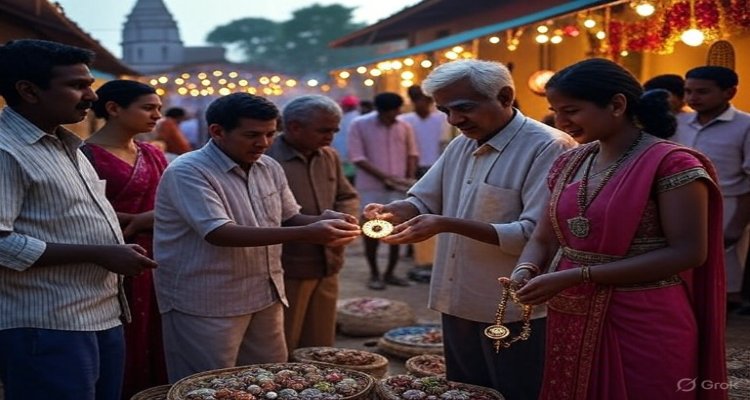When Currency Becomes Culture: The Hidden Economy of Traditions
How traditions around the world transform into hidden economies, where cultural practices act as currency shaping communities, identity, and survival.
Introduction: Beyond Coins and Notes
What if the true currency of a community wasn’t money at all—but rituals, traditions, and shared customs? Across the world, people have long relied on cultural practices as a form of exchange, weaving value not from paper bills but from trust, reputation, and symbolic acts. From gift-giving in Pacific islands to dowries in South Asia, traditions often create their own economies, hidden yet powerful, that rival formal financial systems.
Context & Background: The Roots of Cultural Currency
Before modern banking systems existed, communities survived by exchanging goods, services, and symbolic gestures. Anthropologists often point to the Kula Ring of Papua New Guinea, where islanders exchanged shell necklaces and armbands—not for practical use, but to build alliances, trust, and prestige.
Similarly, Native American communities developed the potlatch ceremony, where wealth was redistributed through elaborate gift-giving feasts. In each case, value wasn’t measured in gold or silver but in the cultural weight of the act itself.
Traditions have always been more than rituals—they’ve been systems of value, identity, and continuity. These hidden economies still thrive today, often intersecting with modern money in unexpected ways.
Main Developments: When Traditions Turn into Transactions
In today’s interconnected world, the boundaries between currency and culture blur more than ever:
- Wedding Dowries and Bride Price: In parts of Africa and Asia, marriage transactions still serve as both cultural practices and financial negotiations, shaping family wealth and social status.
- Festivals as Economic Engines: Religious festivals like Diwali in India or Lunar New Year in China generate billions of dollars in spending—but they also function as cultural investments in family bonds and community ties.
- Handmade Crafts & Ritual Goods: From Mexican Day of the Dead altars to Japanese tea ceremonies, traditional objects embody symbolic value that transcends their market price.
- Modern “Digital Rituals”: Even online spaces echo cultural economies—think of sending virtual gifts on live-streaming apps, where symbolic tokens translate into real income for creators.
Traditions evolve, but their underlying function—binding people through shared value systems—remains unchanged.
Expert Insight: What Anthropologists and Economists Say
Cultural anthropologist Dr. Elena Navarro explains, “Traditions operate as invisible economies. They regulate behavior, redistribute resources, and sustain social networks without needing formal currency.”
Economists, too, recognize this power. A 2023 report from the World Bank noted that cultural practices often fill economic gaps in communities where formal banking is inaccessible. For example, informal gift-exchange networks in rural Africa function as insurance systems during crises.
Meanwhile, public sentiment reveals a dual perspective: some cherish these practices as vital to heritage, while others criticize when cultural traditions place financial strain on families, such as costly wedding expectations.
Impact & Implications: The Future of Cultural Economies
As globalization spreads, traditions face two possible futures:
Commercialization – Festivals and rituals increasingly attract tourism, turning heritage into revenue streams. While this boosts local economies, it risks commodifying sacred practices.
Preservation through Adaptation – Some traditions are evolving to remain sustainable. For instance, communities are replacing lavish ceremonies with symbolic rituals, keeping culture alive without economic burden.
Digital Integration – Technology is creating new cultural currencies, from blockchain-backed art (NFTs) tied to traditional symbols, to diaspora communities sending “ritual remittances” digitally during festivals.
The hidden economy of traditions will continue to shape identity, power, and social cohesion in ways money alone cannot.
Conclusion: Culture as the Oldest Currency
When we peel back the layers of society, it becomes clear that culture itself is a form of wealth. Rituals, festivals, and traditions are not just symbols—they are economic engines, binding contracts, and sources of identity.
As modern life accelerates, the question remains: will we allow traditions to be overshadowed by money, or will we recognize that culture has always been the truest currency of human connection?
Disclaimer :This article explores cultural and economic practices from a journalistic perspective. Interpretations of traditions vary by region and community.











